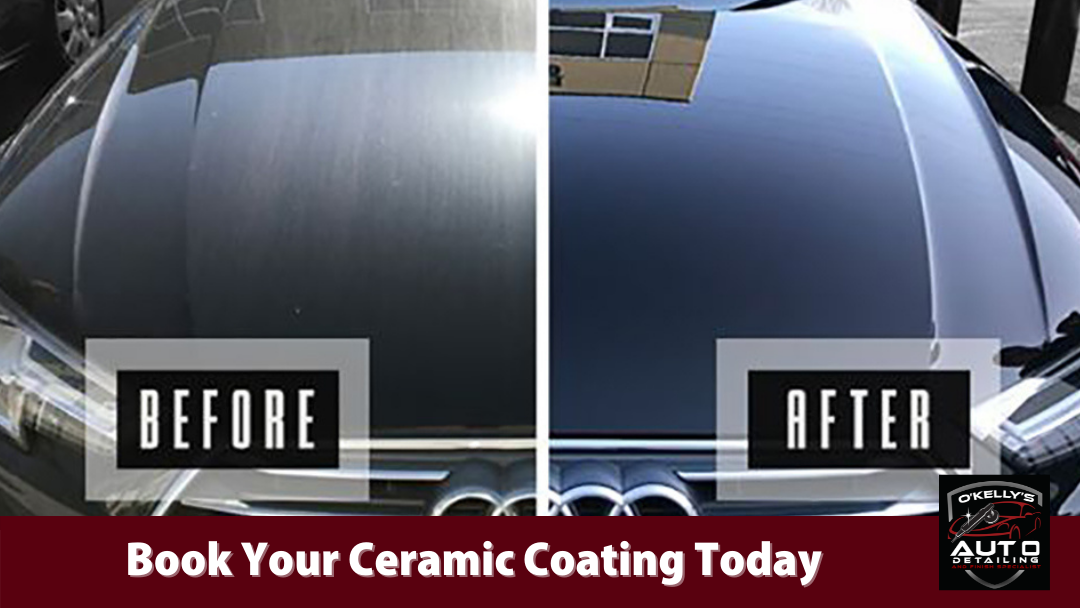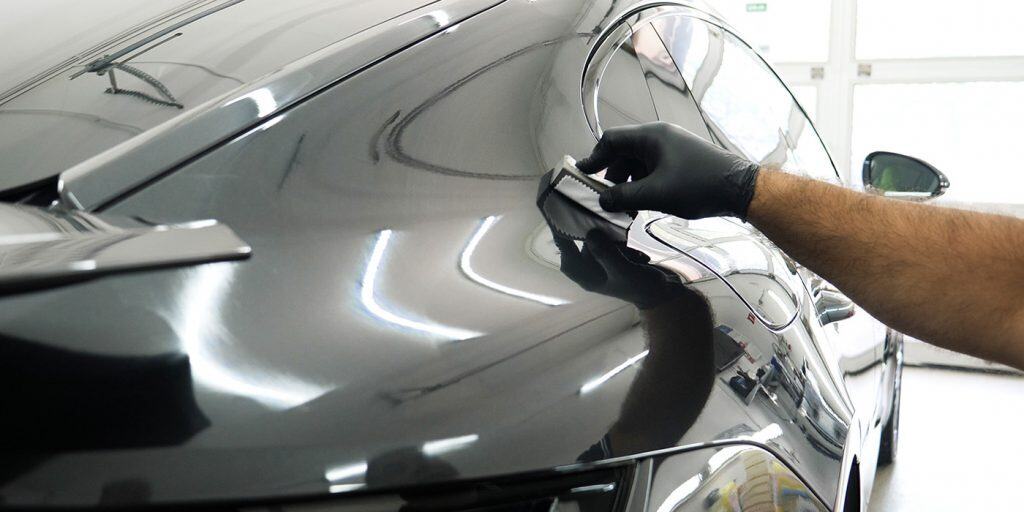How to Apply Ceramic Coating and Achieve Professional Results
How to Apply Ceramic Coating and Achieve Professional Results
Blog Article
Ceramic Layer vs. Standard Wax: Which Gives Better Long-Term Protection?
The dispute in between ceramic finishes and typical wax for car defense has actually gathered substantial interest amongst automobile enthusiasts and specialists alike. While both offer the function of safeguarding paint, their differences in toughness, application, and lasting upkeep prices may influence a consumer's choice. Ceramic finishings boast remarkable long life and resistance to ecological elements, yet the complexity of their application questions concerning ease of access and usefulness. As we discover these contrasting options, it comes to be important to take into consideration not only the prompt advantages however likewise the implications for car treatment in time.
Review of Ceramic Coating
Ceramic finish has actually gotten considerable appeal amongst automotive enthusiasts and detailers alike because of its innovative protective high qualities. This ingenious modern technology is designed to develop a sturdy, hydrophobic guard over a vehicle's paint surface area, considerably improving its resistance to environmental impurities such as dust, UV rays, and chemical spots. Unlike typical wax, which supplies a temporary layer of security, ceramic layers bond at a molecular level with the paint, supplying long-lasting sturdiness-- commonly prolonging beyond 2 years with correct upkeep.
The application process entails meticulous preparation of the car's surface area, including cleansing and polishing to guarantee ideal attachment. As soon as used, the coating cures to create a robust layer that not only adds depth and gloss to the paint but also simplifies upkeep. With its hydrophobic properties, ceramic finish enables water and dust to glide off even more easily, lowering the regularity of cleans and decreasing the danger of swirl marks.
In addition, ceramic coverings are available in numerous formulas, enabling customers to select products customized to their particular requirements and preferences. On the whole, ceramic coating represents a considerable development in paint security modern technology, supplying remarkable efficiency contrasted to traditional choices.
Overview of Standard Wax
Commonly considered as a staple in automotive care, wax serves as a preferred selection for those looking for an uncomplicated method to enhance and safeguard their vehicle's paint - ceramic coating. Automotive wax typically makes up all-natural active ingredients, such as carnauba, or synthetic substances, made to create a protective layer externally of the paint. This layer not only improves the vehicle's gloss and shine but additionally provides a barrier against ecological impurities
The application of wax is generally easy to use, making it obtainable for both specialists and do it yourself enthusiasts. It can be applied by hand or maker, permitting adaptability in the outlining procedure. When applied, wax calls for a curing duration, after which it solidifies to create a protective shell. Wax is also known for its capability to fend off water, advertising a beading impact that helps in the avoidance of water spots and rust.
However, while wax is efficient for improving the aesthetic charm of an automobile, it is necessary to keep in mind that the security it supplies may require more frequent reapplication contrasted to alternative products, such as ceramic finishings. On the whole, typical wax continues to be a favored choice for those focusing on simplicity of usage and immediate visual improvement.
Toughness and Durability Contrast
While both ceramic coverings and traditional wax offer safety benefits for automotive paint, their sturdiness and long life vary substantially. Standard wax, normally made from natural carnauba or artificial polymers, generally supplies a safety layer that lasts roughly 3 to six months. This relatively brief lifespan necessitates regular reapplication to keep optimum defense.
In comparison, ceramic finishings are crafted from sophisticated nanotechnology, developing a covalent bond with the paint surface area. This leads to a durable, hydrophobic layer that can sustain for two to 5 years, relying on the item and environmental conditions. The premium durability of ceramic finishes is credited to their chemical framework, which provides improved resistance to scrapes, UV rays, and oxidation.

Defense Versus Ecological Aspects
Protecting a vehicle's paint from environmental variables is critical for maintaining its appearance and worth with time. Cars are regularly subjected to a range of elements, consisting of UV rays, bird droppings, tree sap, acid rain, and road grime, all of which can compromise the honesty of the paintwork.
Ceramic layers offer a robust defense against these environmental assailants. Unlike typical wax, which see post can deteriorate rapidly under UV exposure, ceramic coverings create a long lasting, hydrophobic layer that withstands the harmful results of sunshine helpful resources and toxic wastes. This sophisticated technology produces a chemical bond with the vehicle's surface area, providing superior defense that lasts for many years, even in extreme problems.
Traditional wax, while easier to apply, typically calls for frequent reapplication and offers limited resistance to contaminants and UV rays. With time, it can damage down, leaving the paint at risk to scrapes and oxidation. On the other hand, ceramic coatings maintain their safety high qualities longer, considerably minimizing the threat of paint damage and making certain that the car retains its visual allure. Consequently, ceramic finishes are increasingly acknowledged as the premium choice for lasting defense against environmental factors.
Application and Upkeep Distinctions
The methods of application and subsequent upkeep for ceramic coverings and traditional wax vary significantly, influencing the overall customer experience and performance of each product. Ceramic coverings call for an even more elaborate application process, generally including surface prep work that consists of cleaning, sanitizing, and polishing the automobile. Once the surface area prepares, the ceramic finishing is used in a regulated environment, typically needing specialist competence to make sure correct treating and bonding to the paint.

While both items enhance car look, the longer-lasting defense supplied by ceramic coatings may warrant their first financial investment, in spite of the more requiring application procedure. Alternatively, typical wax remains a preferred selection for those looking for a less complex, albeit short-term, remedy.

Final Thought
Finally, ceramic finishes show considerable advantages over standard wax in regards to durability and environmental management. With a life expectancy prolonging 2 to five years and premium resistance to UV rays, dirt, and chemical discolorations, ceramic layers offer a more effective solution for lasting lorry maintenance. Although the application process might need specialist proficiency, the resulting cost savings and lowered frequency of reapplication emphasize the value of ceramic layers for those looking for optimal automobile security.
The debate between ceramic finishings and standard wax for car protection has garnered substantial focus among vehicle fanatics and professionals alike. Unlike typical wax, which offers a short-term layer of company website defense, ceramic finishings bond at a molecular level with the paint, supplying resilient resilience-- commonly extending past 2 years with appropriate maintenance.
While both ceramic layers and traditional wax offer protective advantages for vehicle paint, their sturdiness and longevity vary substantially. For cars and truck enthusiasts looking for long-term security, ceramic layers present an engaging benefit over traditional wax items.
In verdict, ceramic layers demonstrate substantial benefits over traditional wax in terms of sturdiness and environmental defense.
Report this page